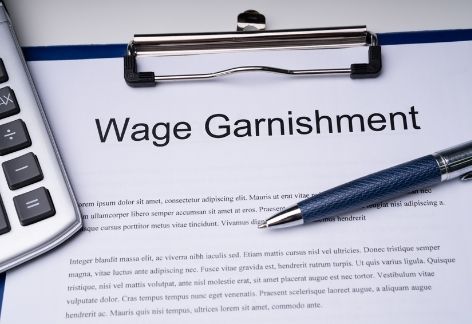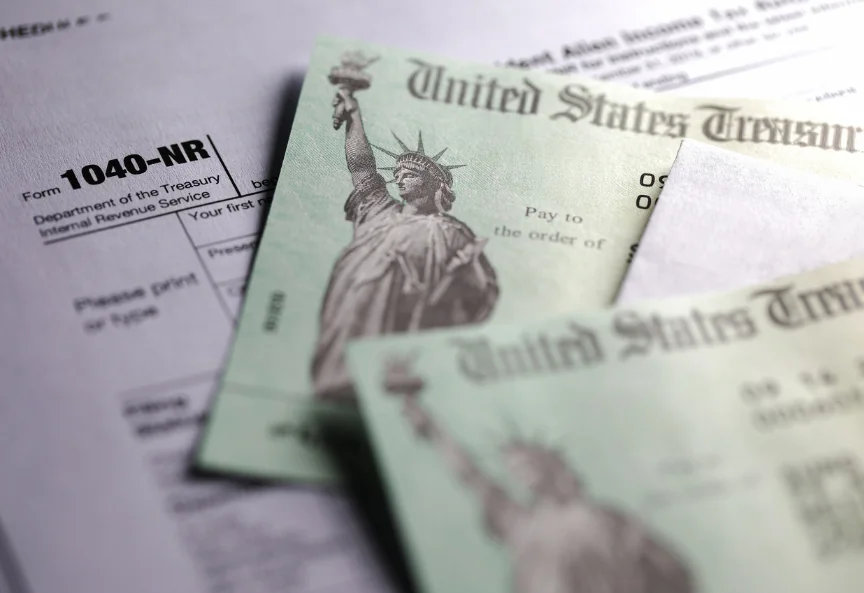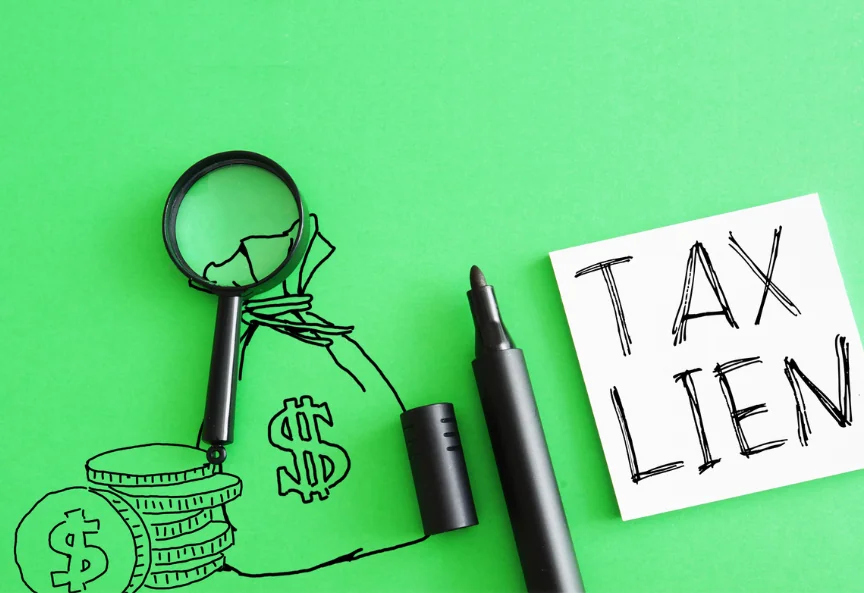How much money can be garnished from your paycheck? This guide explores the collection process and wage garnishment calculations.
[lwptoc skipHeadingLevel="h3"]
The reputation of the IRS usually precedes it, to the point that most people know the IRS can take your money if you owe taxes for too long or owe too many taxes. But what most people might not realize is that the IRS, like many other creditors, can legally take money right out of your paycheck before it arrives in the bank. This is called wage garnishment.
The IRS cannot take your entire paycheck, however. There is a limit to how much money can be garnished from your paycheck each week and specific guidelines that the agency has to follow when going through this process.
The IRS must also give you a series of fair warnings before wage levies begin, and while drastic, a wage levy is one of the last things the IRS resorts to after a long collection process.
What is Wage Garnishment?
Wage garnishment is not exclusive to the IRS and refers to any legal creditor claim on a person’s wages for a debt owed. In most cases, wage garnishments start with a court order to your employer, who will be responsible for ensuring that a certain portion of your wage is withheld and sent back to the person you owe money to until that debt is paid.
The most common debts that result in wage garnishment (aside from a tax debt to the IRS) are child support debts and consumer debts (student loans, credit cards, mortgages, auto loans, and payday loans, for example).
Wage garnishment, including tax levies, affect up to one in ten workers aged 35 to 44. However, wage garnishments are not the only type of garnishment/levy. Both the IRS and creditors can claim bank accounts and assets to satisfy their debt, either through the IRS collection process or a court order.
For non-tax wage garnishment, the exact process (including how long you have before the start of the garnishment, from the day you receive your notice) depends on state law.
Understanding the Collection Process
Wage levies, alongside other tax levies, are one of the last resorts the IRS has up its sleeve when dealing with tax debt. In general, most taxpayers with minimal tax debt are informed about their obligation to pay via mail or face penalties and interest.
Failure to pay penalties and interest will continue to rise until the debt reaches a sufficient size for the IRS to begin a lien.
A federal tax lien is a legal claim by the government on all of your property, effectively taking priority over any other creditor, including future ones until your debt is paid.
This can greatly limit your access to financing and may necessitate that you work with the IRS to secure a way out of the lien to borrow money for your debt. Most creditors have less steep interest rates than what the IRS charges on tax debt.
If a lien is ignored long enough, the IRS will send you:
-
-
- A notice and demand for payment
- A notice of intent to levy
- A notice of your right to a Collection Due Process hearing
-
This last notice starts a 30-day timer before the garnishment begins, during which you have time to contact the IRS about starting a payment plan or gather the evidence to dispute your tax debt.
All in all, from the first IRS notice to your levy, the process can take anywhere from just a few weeks to 25 weeks (depending on the severity of the tax debt).
How Much Money Can Be Garnished From Your Paycheck?
When the IRS calculates how much money can be garnished from your paycheck, it is based on the number of dependents you have. The more people rely on your income, the less the IRS can claim. If you’re a low-income taxpayer with several dependents, the IRS might not be able to levy your wages. They can still potentially levy your bank accounts and Social Security income.
To determine exactly how much money the IRS is going to levy from your wages, refer to the official Publication 1494 or contact a professional tax attorney.
What if IRS Wage Garnishment is Causing Me Hardship?
The IRS must comply if their collection process is causing economic hardship – in other words, if you can prove that the IRS is taking too much money for you to be able to afford living, you can explain your financial situation to the IRS and ask to be temporarily made uncollectable.
Being made currently not collectible does not erase your tax debt, or even stop interest from accruing. Your debt will continue to grow, but the IRS will not attempt to claim money from you until your financial situation has improved.
It will check back periodically to review if you are still under financial distress. Once your situation has improved enough, it will resume collection actions (provided you haven’t willingly entered into a payment plan with the IRS at that point.
Can IRS Wage Garnishment Be Avoided?
Yes, but not in a way that might make you happy. The only real way to avoid a levy is to pay your tax debt.
You don’t have to pay it all at once. Instead, you can enter a payment plan with the IRS to pay off your debt in a series of lump sums within 180 days or through monthly installations over a longer period of time.
There are a few prerequisites for starting a payment plan with the IRS, the biggest of which being that must be up to date on your tax returns.
If you cannot afford to pay the IRS back at your current income level, even through monthly installments over the next ten years from the date your tax debt was first assessed, you may be eligible for an offer in compromise. This allows you to pay a reduced tax debt, depending on your current income and the total value of non-exempt assets.
One way or the other, getting into hot water with the IRS can have dire financial consequences. The last thing you want to do is ignore your tax debt. No matter how large your debt, acting sooner rather than later can save you a lot of money in the long-term – especially if you’re working with tax professionals to help you navigate the wage garnishment release process.











